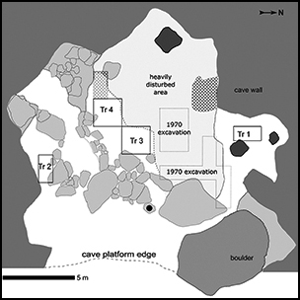Article contents
Tropical island adaptations in Southeast Asia during the Last Glacial Maximum: evidence from Palawan
Published online by Cambridge University Press: 01 August 2022
Abstract

Throughout the Late Pleistocene and Early Holocene, humans adapted to significant climate and environmental change. One key region for investigating these adaptive strategies is Island Southeast Asia, where fluctuating sea levels led to dramatic changes in coastlines, vegetation and fauna. The authors present new data from the re-excavation of Pilanduk Cave on Palawan Island, Philippines. The results corroborate the results of earlier excavations that identified Pleistocene occupation of the site. Pilanduk shows evidence for specialised deer hunting and freshwater mollusc consumption during the Last Glacial Maximum. The results add to the evidence for the shifting foraging behaviours of modern humans occupying variable tropical environments across Island Southeast Asia.
- Type
- Research Article
- Information
- Copyright
- Copyright © The Author(s), 2022. Published by Cambridge University Press on behalf of Antiquity Publications Ltd.
References
- 3
- Cited by




